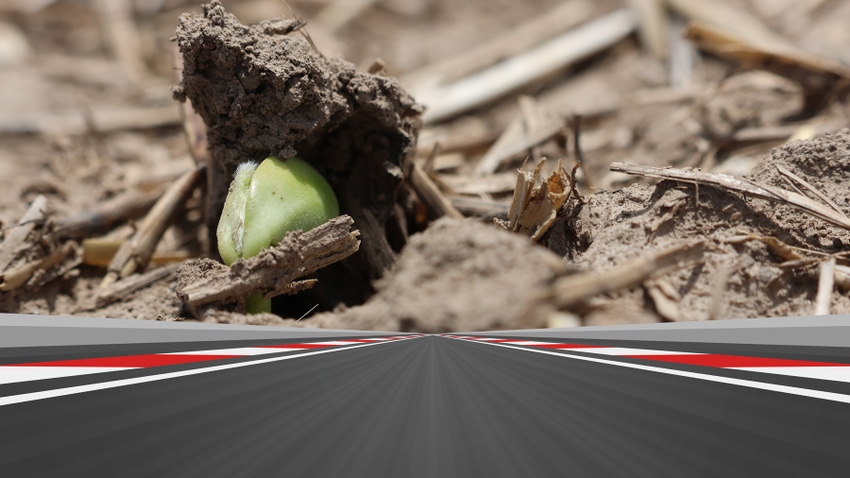
Replanting soybeans is like restarting a race, but behind in the grid, Andre Reis says. Farmers may want to reassess their strategy for success this growing season.
Reis, the new University of Missouri Extension state soybean specialist, says if the soybean replant date is in late May and June, farmers may find “the reduced yield potential may be lower than the field you are trying to fix.”
He looked at MU Soybean Variety Testing legacy data and found an average yield loss of 3.5 bushels per week of delayed planting dates after May 15 across all Missouri production environments. In the southern region of the state, it is closer to 2.6 bushels per week.
On top of the potential yield loss, growers need to account for extra seeds and replanting costs, Reis adds. “Replanting a soybean field is a situation that nobody likes to encounter. An overall assessment of the likelihood of a stand recovery and the implications of a late planting date helps to make the best decision.”
So, what should farmers look for before replating? Here are Reis’ suggestions:
Assess germination. Soybean seeds need water to germinate. The lack of hydration will not allow plants to emerge.
Count plants. Reis says when the initial plan population varies significantly from the targeted seed population, farmers may need to replant. However, pay attention to your soybean variety — it may surprise you. Soybeans have an ability to compensate for low plant stands if environmental stressors stay at bay. “Modern soybean varieties can produce higher yields with a population of as little as 50,000 plants per acre at harvest in southern regions or 75,000 in northern regions,” he notes. Farmers should consider plant stand.
Inspect stand. Reis finds uniformity is key in soybean fields. If the standard deviation of the distance between plants is 4 inches or greater, there is a predicted yield loss of up to 30 bushels per acre. However, if the stand produces plants too close to one another, it can create competition for light and nutrients, which also affect yield.
Poor soybean stands may provide adequate yields without replanting. “It will depend on the growing conditions during the late vegetative and reproductive stages,” Reis says. “High-yield environments are less affected by the initial stand than low-yield environments.
Reis reminds farmers that replanting is, above all, a risk management decision. They need to ask, is it economically better to keep the failed stand, or fully or partially replant it with a lower yield potential?
MU-IPM contributed to this article.
Read more about:
DroughtAbout the Author(s)
You May Also Like






